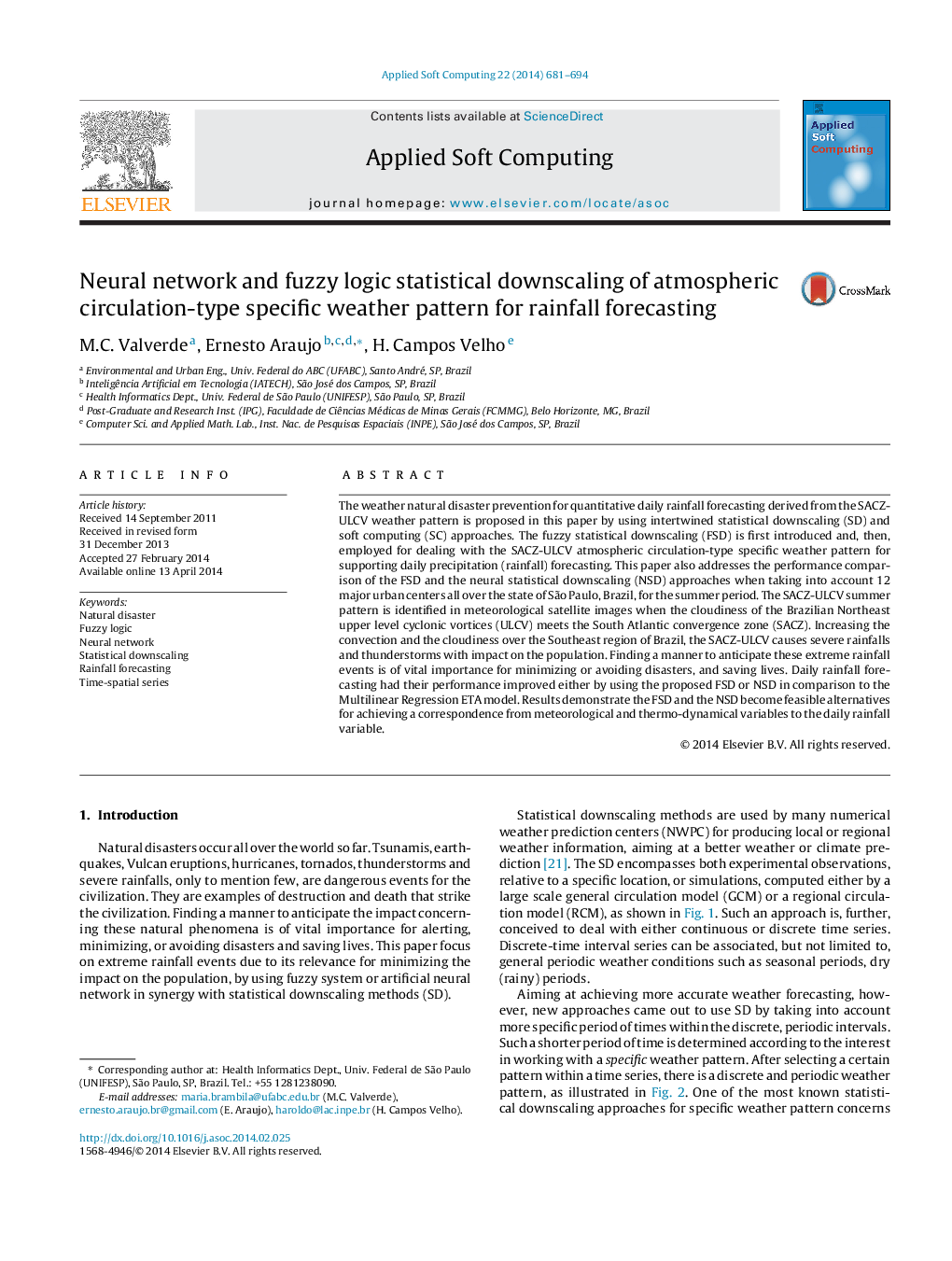| کد مقاله | کد نشریه | سال انتشار | مقاله انگلیسی | نسخه تمام متن |
|---|---|---|---|---|
| 495385 | 862825 | 2014 | 14 صفحه PDF | دانلود رایگان |
• Fuzzy statistical downscaling (FSD) intertwines fuzzy system and statistical downscaling.
• FSD models the meteorological and thermo-dynamical to the daily rainfall mapping.
• FSD enhance severe rain prevention over neural statistical downscaling (NSD) and Multinear Regression ETA model.
• FSD and NSD support rainfall predication concerning the SACZ-ULCV weather pattern.
• FSD and NSD forecast quantitative daily rainfall to prevent natural disasters.
The weather natural disaster prevention for quantitative daily rainfall forecasting derived from the SACZ-ULCV weather pattern is proposed in this paper by using intertwined statistical downscaling (SD) and soft computing (SC) approaches. The fuzzy statistical downscaling (FSD) is first introduced and, then, employed for dealing with the SACZ-ULCV atmospheric circulation-type specific weather pattern for supporting daily precipitation (rainfall) forecasting. This paper also addresses the performance comparison of the FSD and the neural statistical downscaling (NSD) approaches when taking into account 12 major urban centers all over the state of São Paulo, Brazil, for the summer period. The SACZ-ULCV summer pattern is identified in meteorological satellite images when the cloudiness of the Brazilian Northeast upper level cyclonic vortices (ULCV) meets the South Atlantic convergence zone (SACZ). Increasing the convection and the cloudiness over the Southeast region of Brazil, the SACZ-ULCV causes severe rainfalls and thunderstorms with impact on the population. Finding a manner to anticipate these extreme rainfall events is of vital importance for minimizing or avoiding disasters, and saving lives. Daily rainfall forecasting had their performance improved either by using the proposed FSD or NSD in comparison to the Multilinear Regression ETA model. Results demonstrate the FSD and the NSD become feasible alternatives for achieving a correspondence from meteorological and thermo-dynamical variables to the daily rainfall variable.
Journal: Applied Soft Computing - Volume 22, September 2014, Pages 681–694
